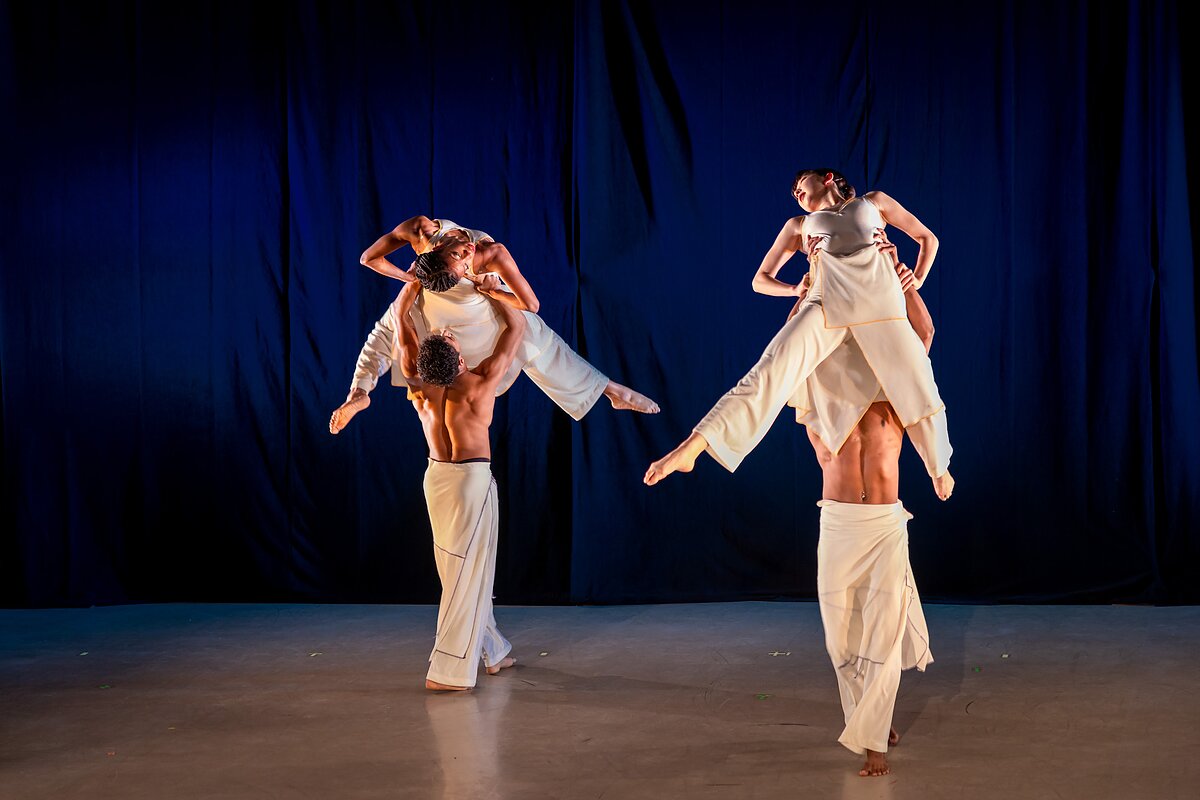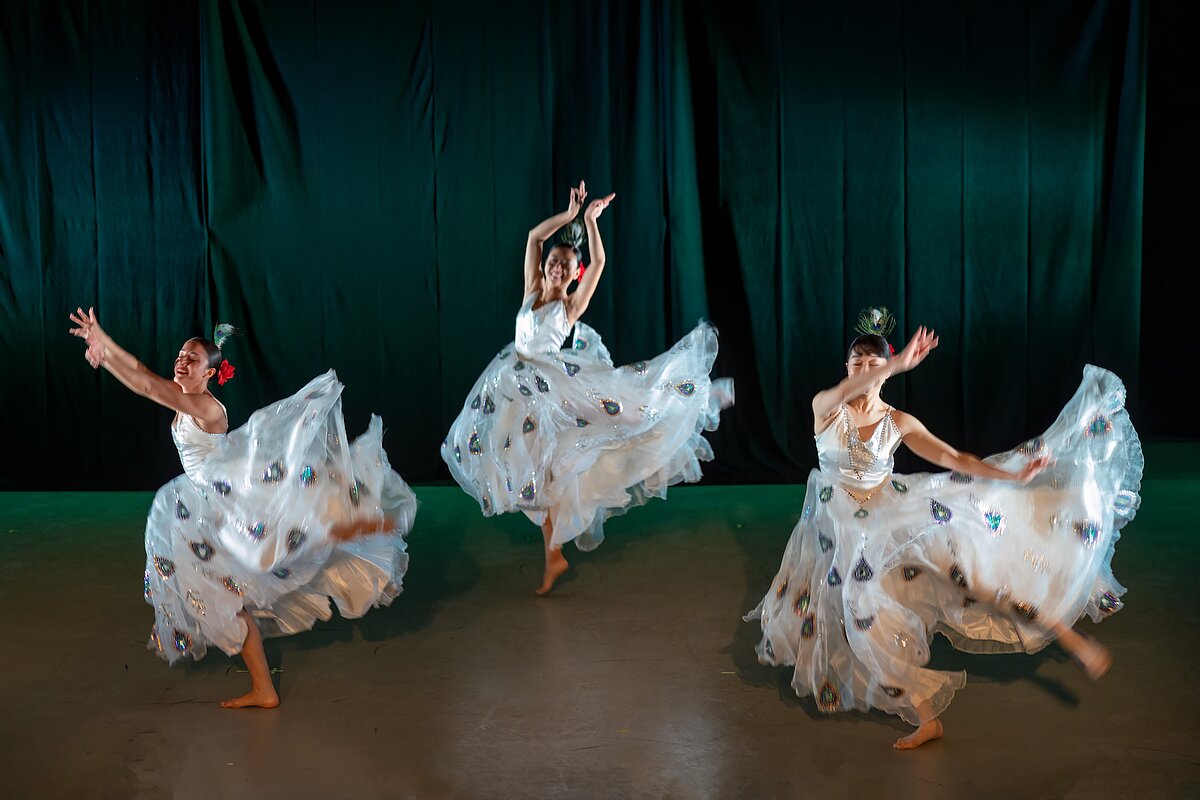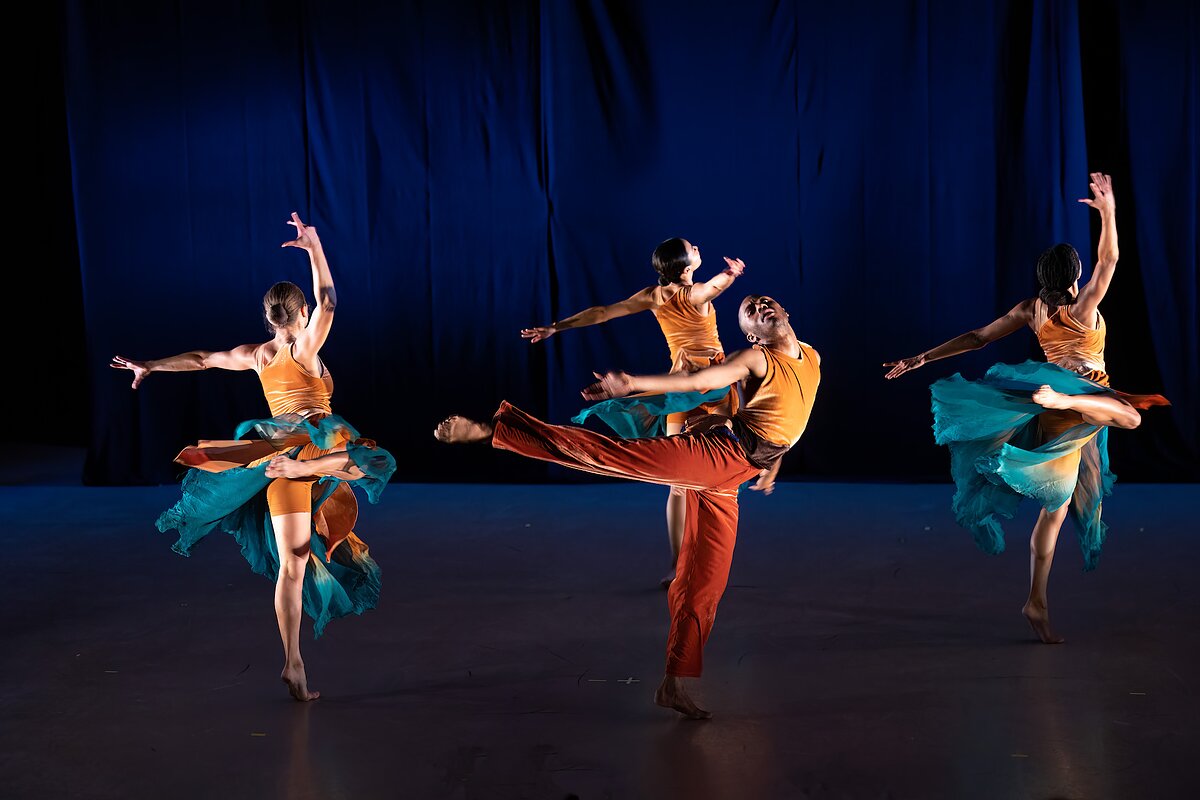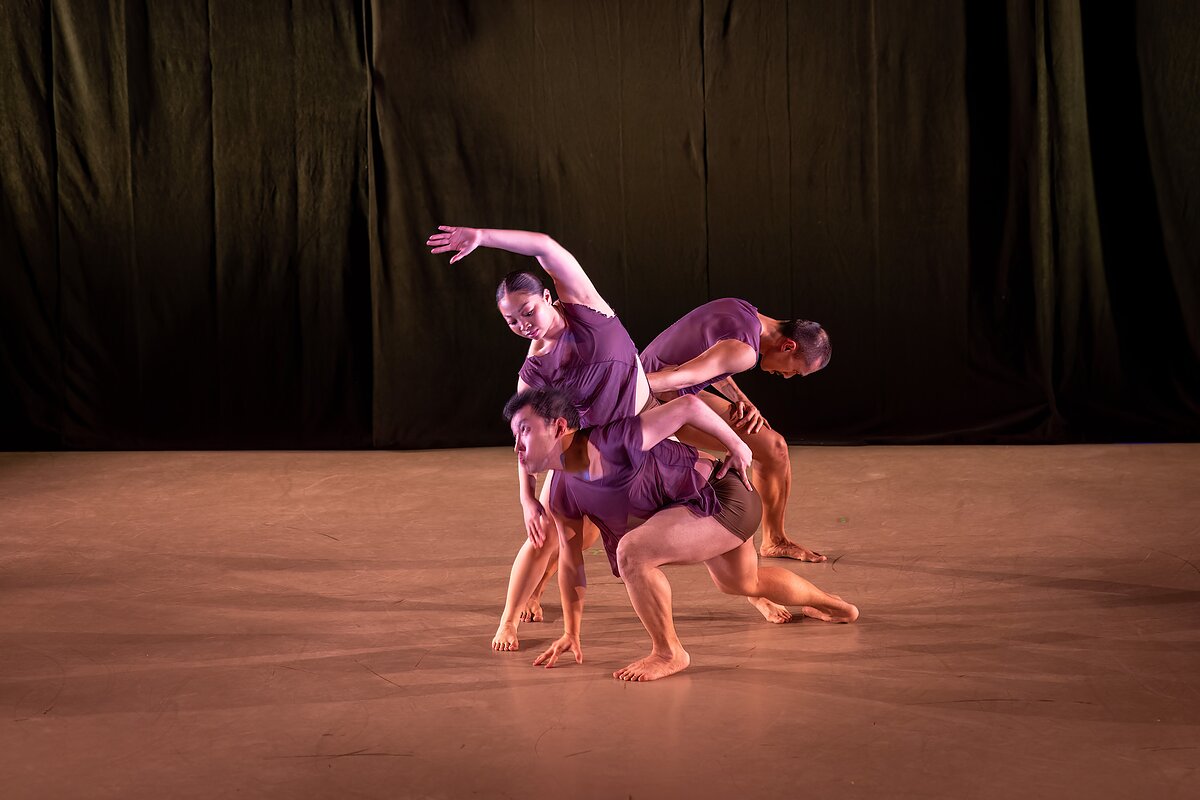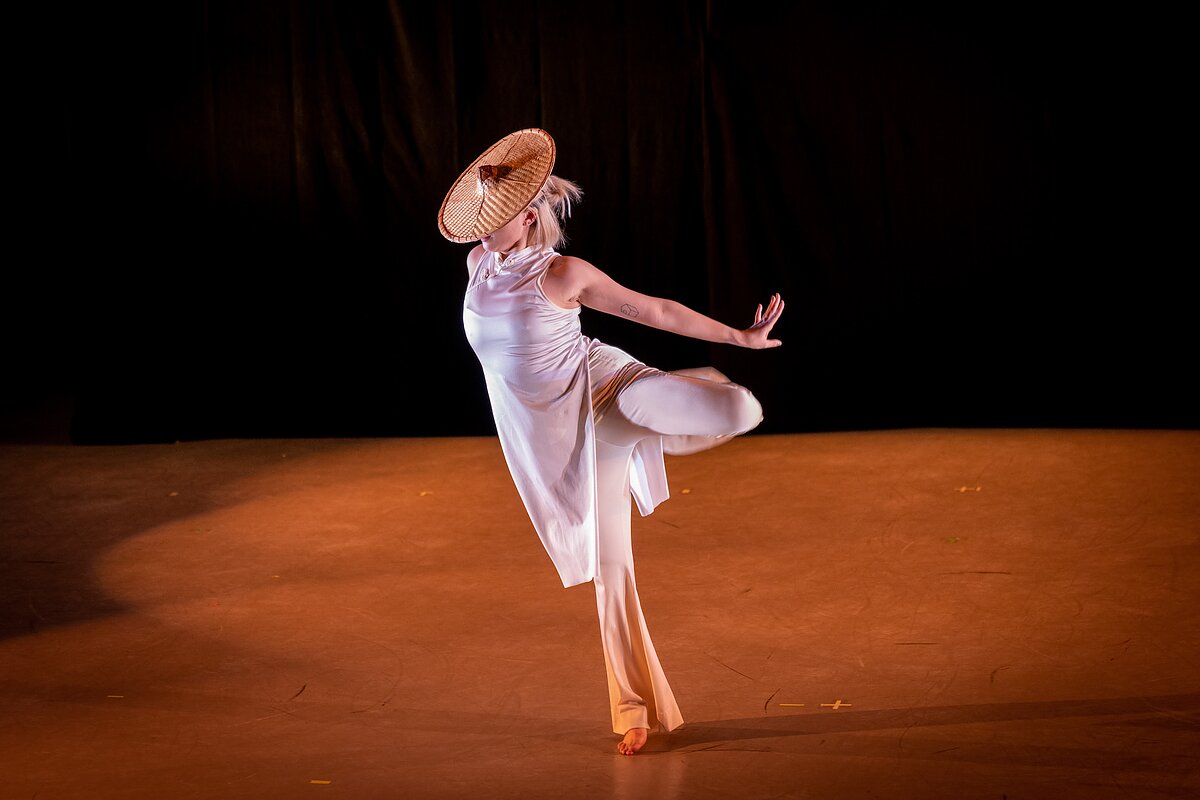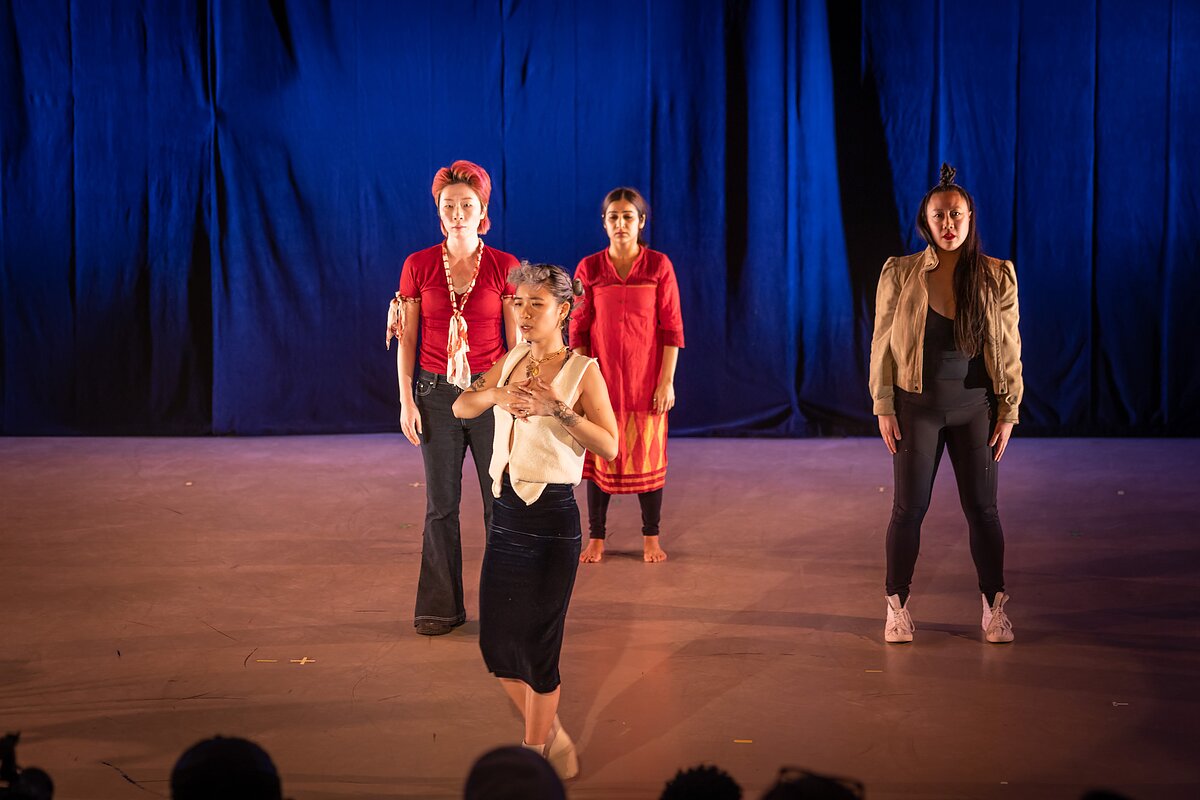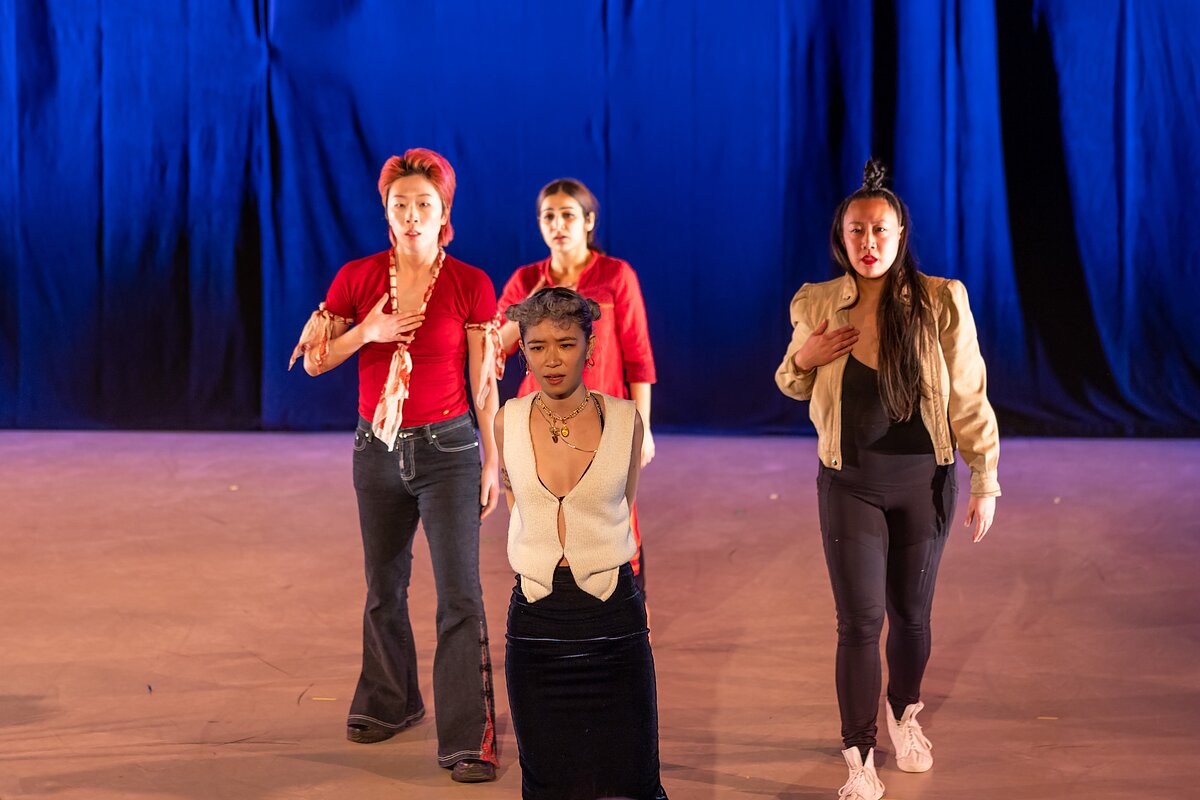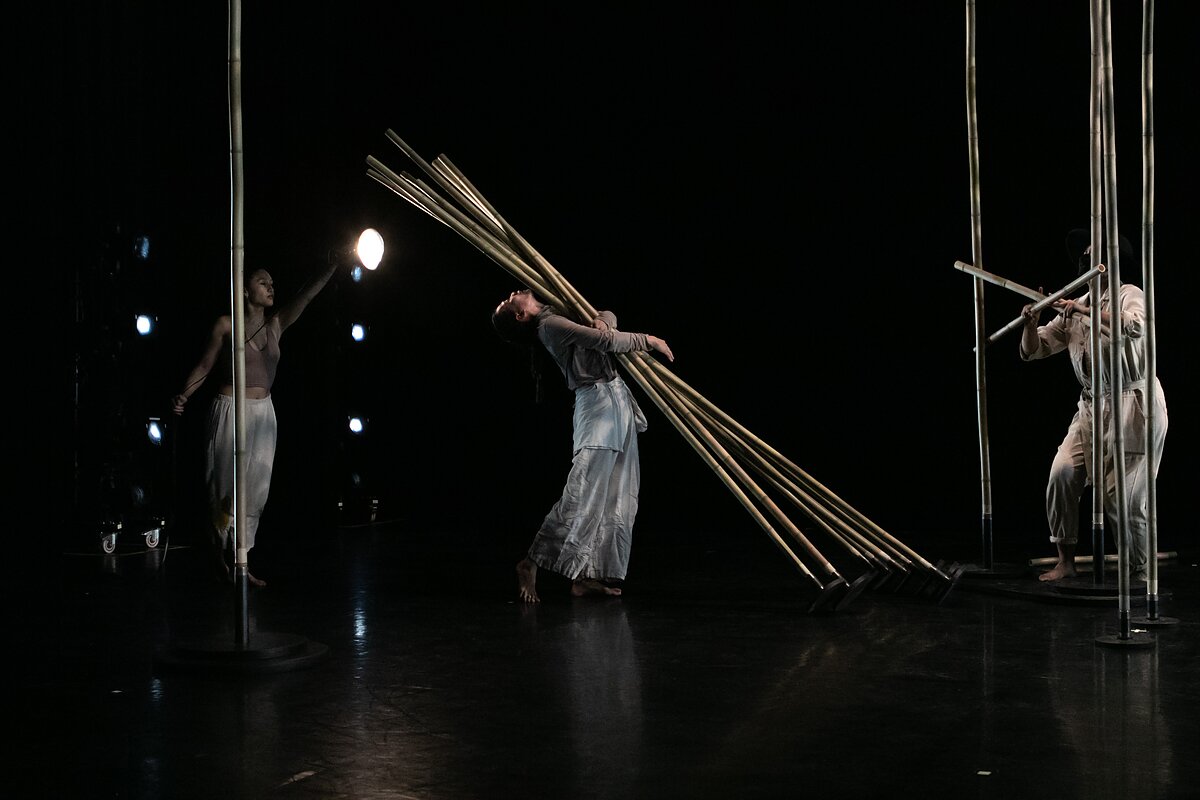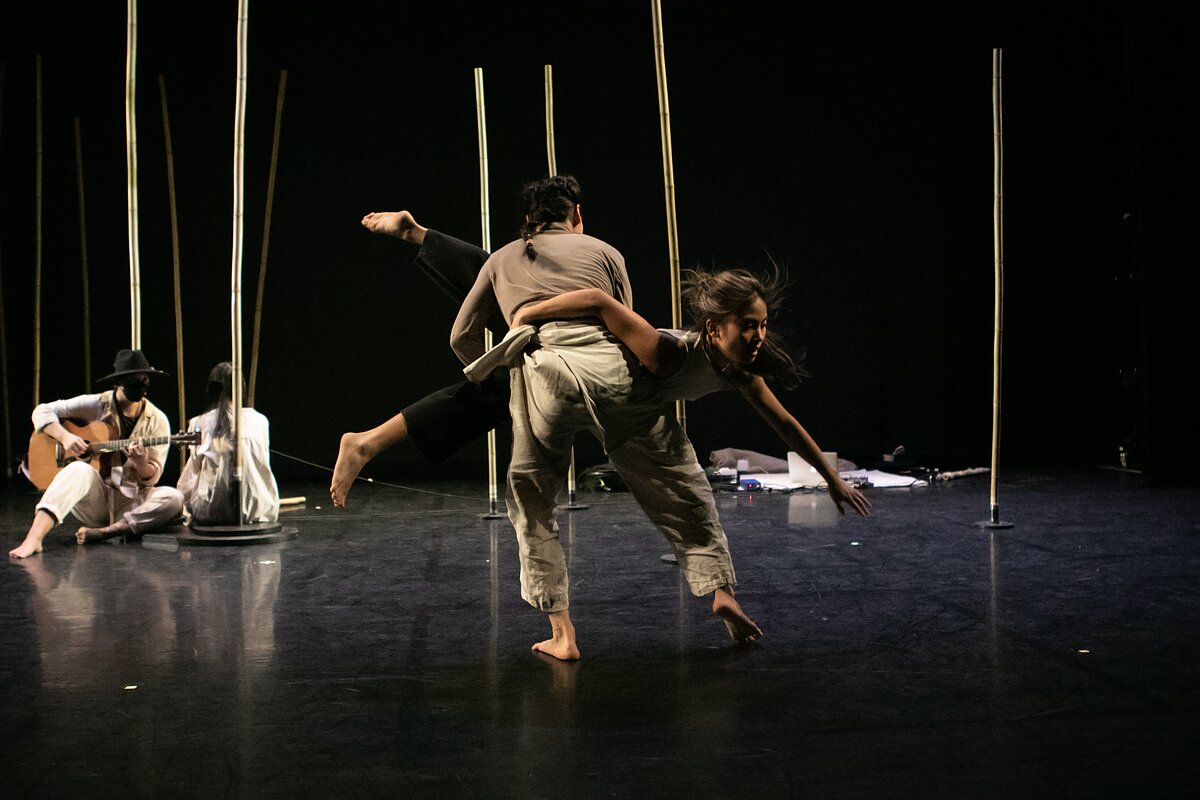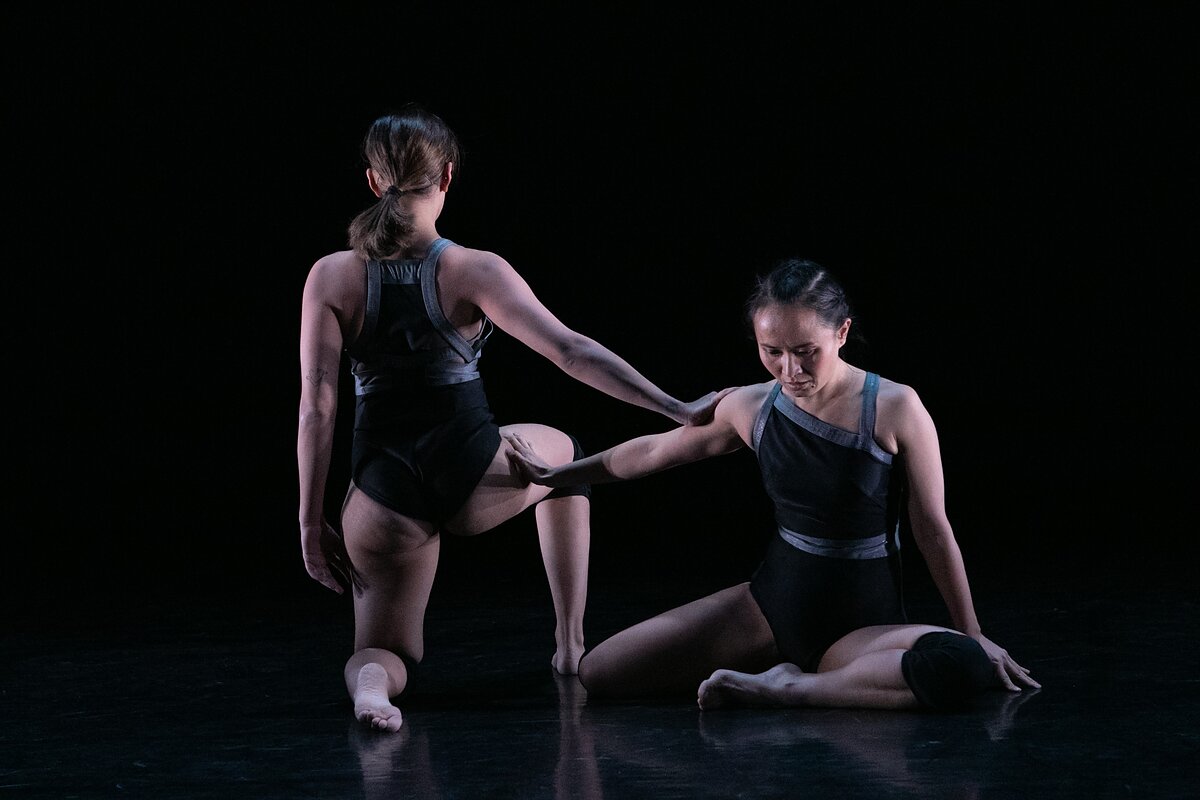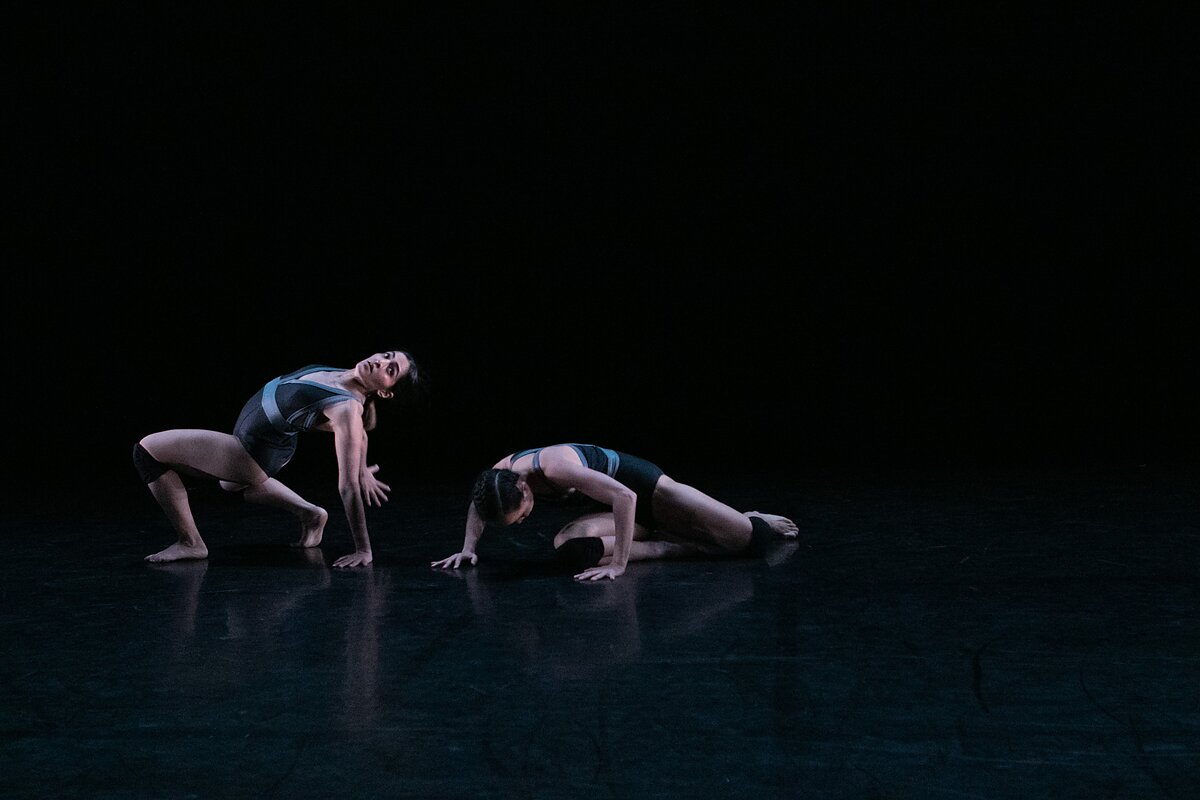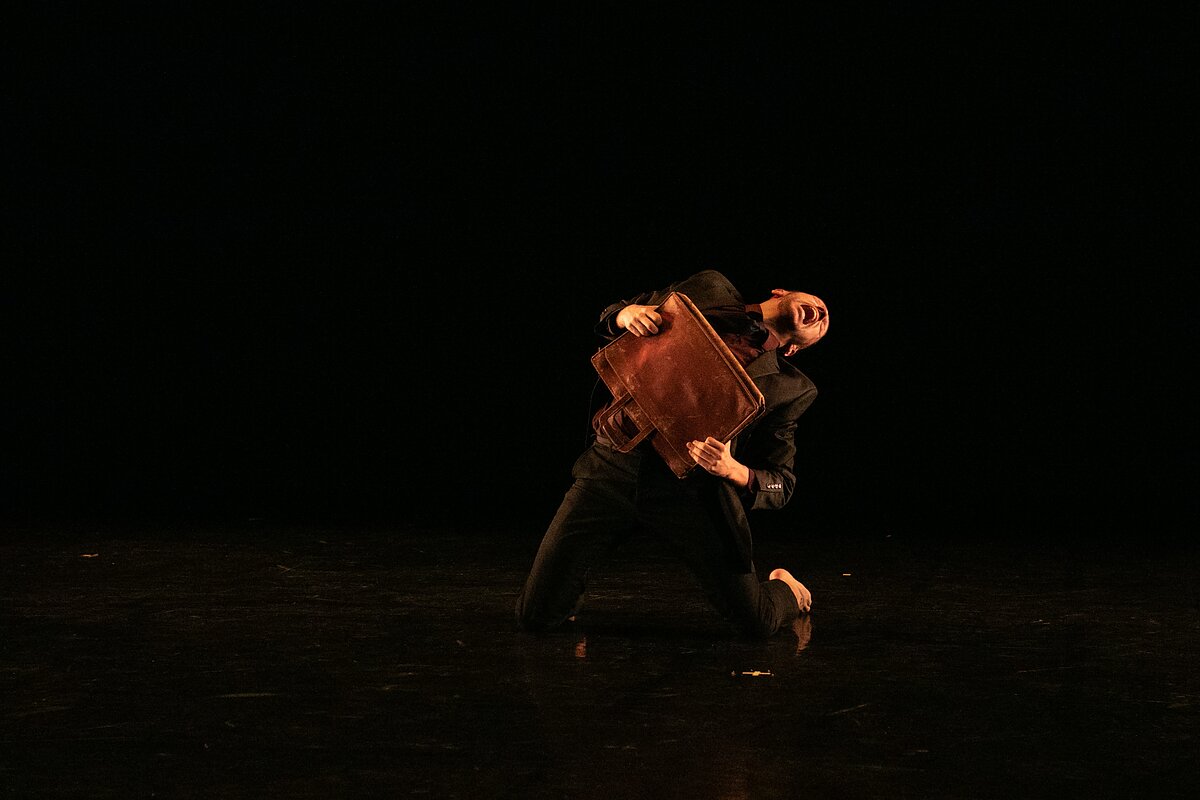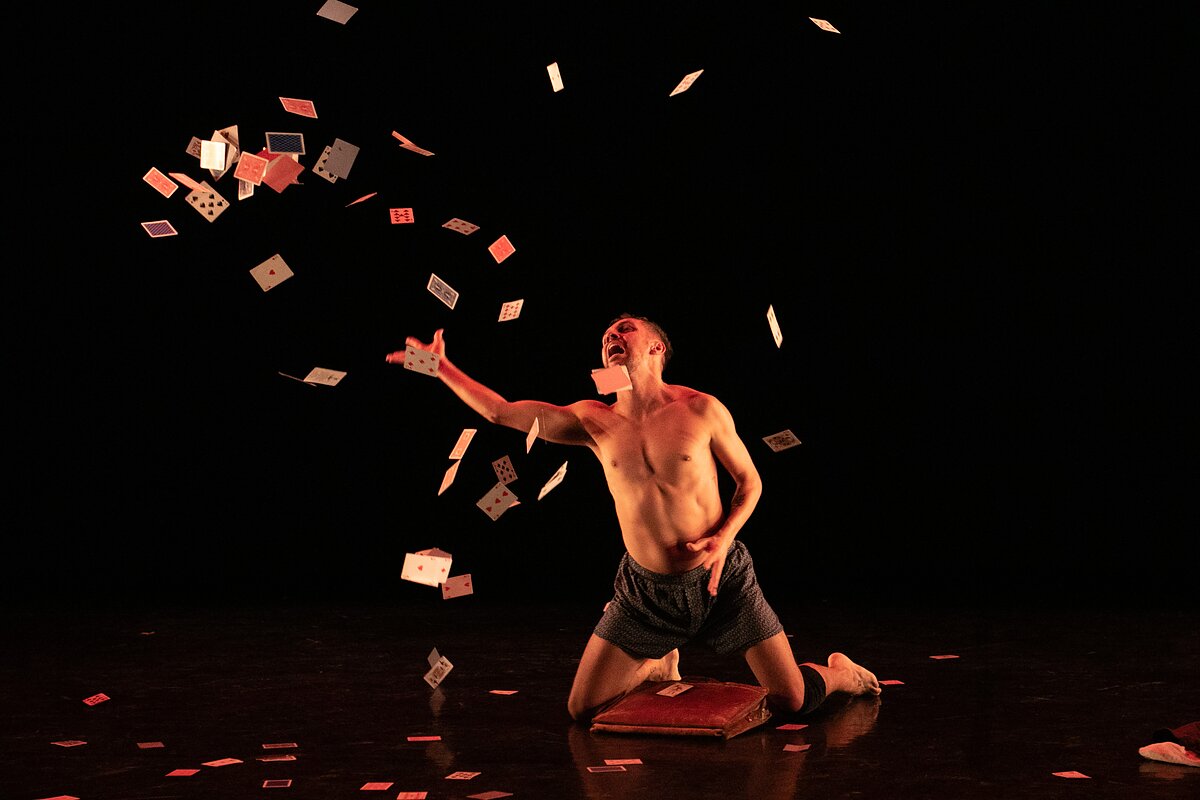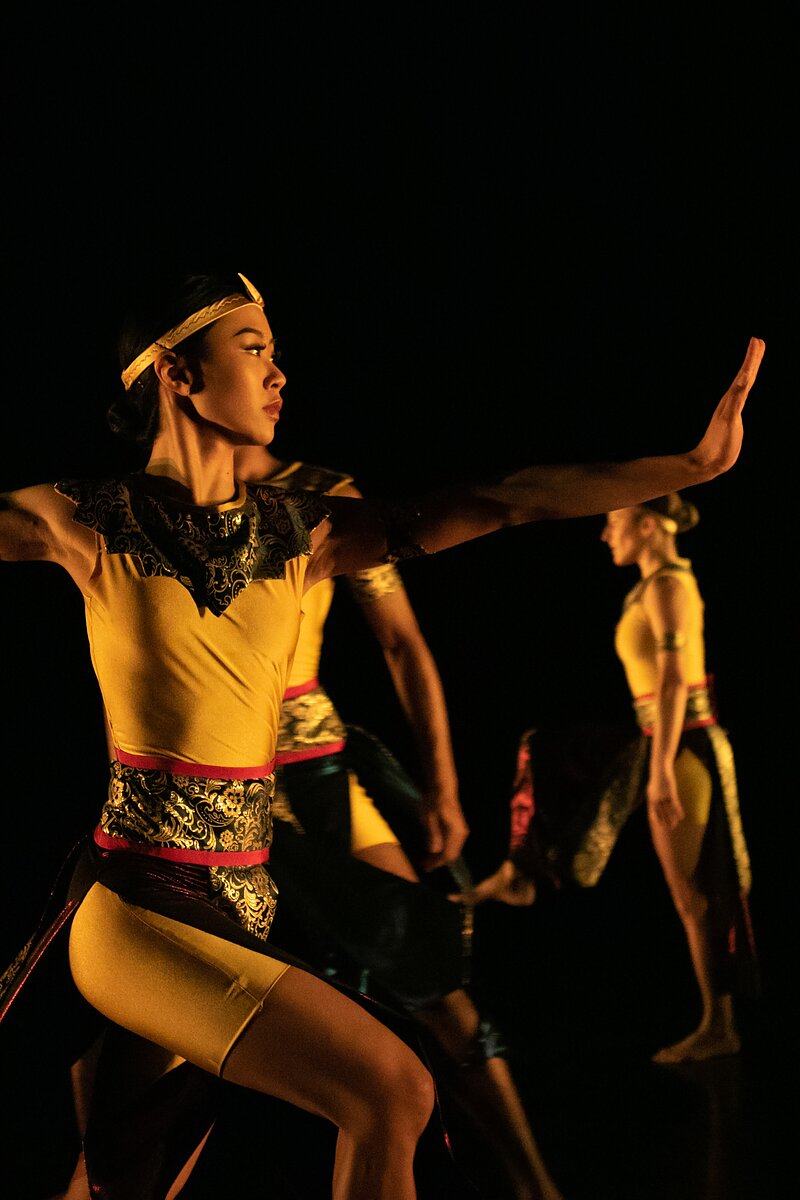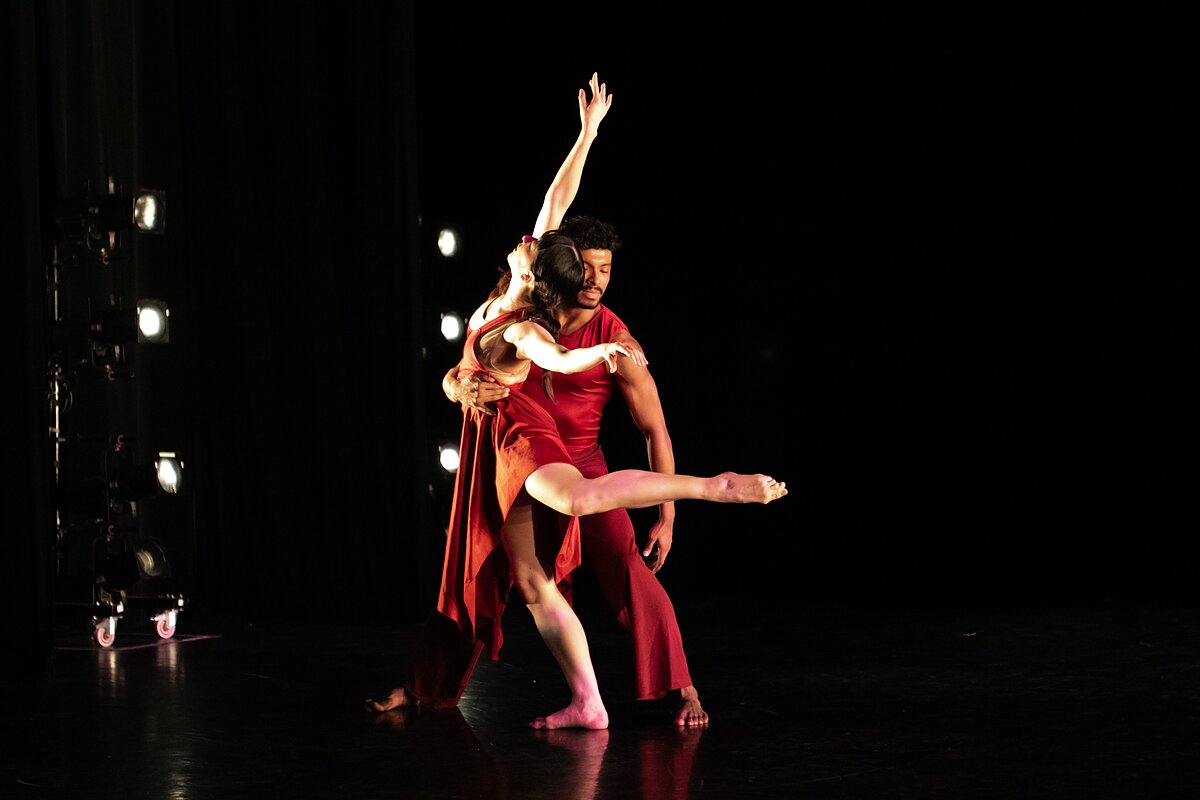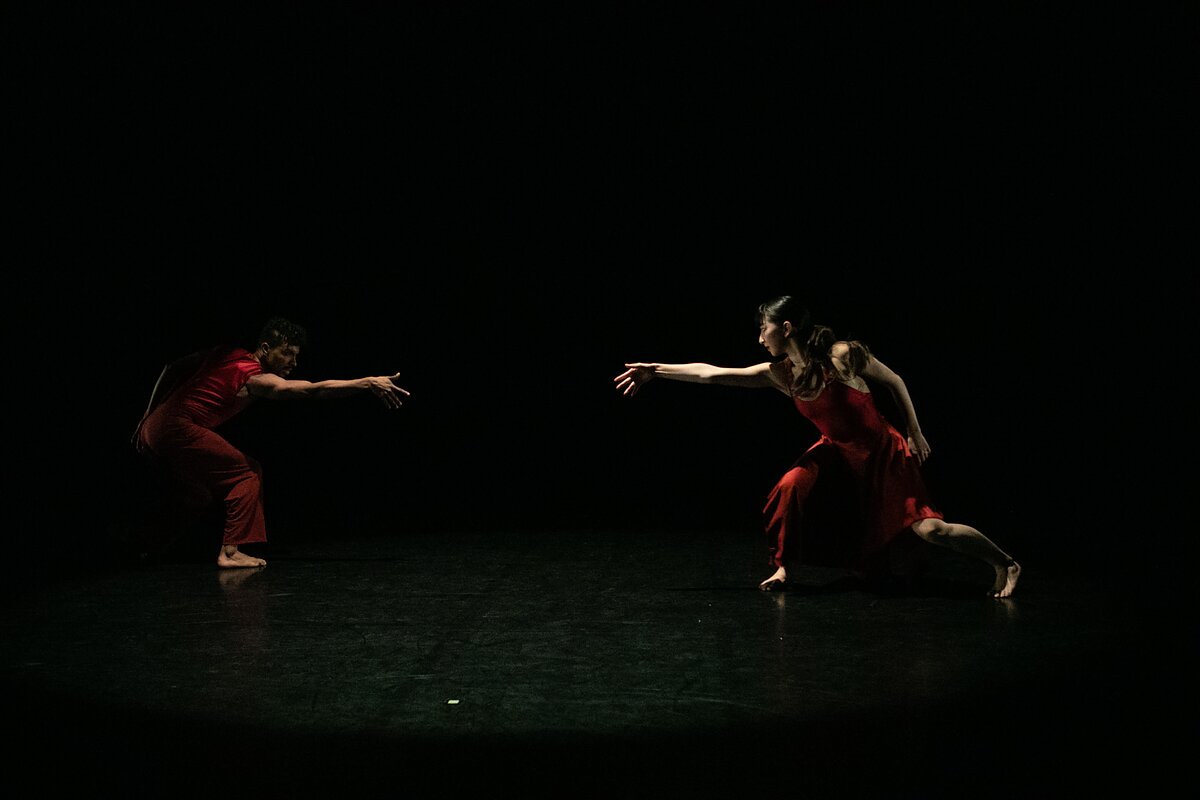Two Nights of AAPI Dance, Presented by A4 and Nai-Ni Chen Dance Company
On January 15th and 16th, A4 and Nai-Ni Chen Dance Company presented two nights of vibrant AAPI dance performances by Nai-Ni Chen Dance Company, Marie Lloyd Paspe and Almasphere, Rohan Bhargava/Rovaco Dance Company, J CHEN PROJECT, and H+ House of Chow as part of APAP|NYC+ 2023, the Association of Performing Arts Professionals’ annual conference.
Night one opened at New York City Center Studio 4 with three performances by Nai-Ni Chen Dance Company. The first was an excerpt from “Incense.” Inspired in part by Carlos Dorian’s sculpture Nine Muses (1990-97), the dance is also inspired by Chen’s childhood memories of plumes of fragrant incense smoke trailing through the long corridors of her temple. Set to a mystical, meditative score by Joan La Barbara, dancers Candace Jarvis, Rio Kikuchi, Esteban Santamaria, and Evan Stewart evoked ethereal white plumes of smoke.
Following that was a rendition of their 2022 piece, “Peacocks Under the Moonlight” which celebrates the Dai people of the Yunnan province in China, for whom the peacock is considered sacred. Dancers Rio Kikuchi, Namhui Kim, and Sarah Botero moved to Dai folk music performed by a hulusi, a traditional reed instrument.
Nai-Ni Chen Dance Company’s final performance was an excerpt from one of Chen’s signature works, “Mirage.” Inspired by the rhythms and dances of the Uyguhur people of China’s Xinjiang province, “Mirage” echoes the tranquility and passion of the desert. Dancers Greta Campo, Candance Jarvis, Rio Kikuchi, Namhui Kim, Evan Matthew Stewart, Esteban Santamaria, and Kyle H. Martin performed to a score commissioned by New Music/USA.
J CHEN PROJECT’s dancers Maya Lam, Tsubasa Nishioka, and Carl Ponce Cubero then took the stage to perform “Reclaim,” which is dedicated to Chen’s maternal grandfather, 周伯達 Po-Ta Chou. Originally commissioned by the New York Chinese Cultural Center and created in residence at the Museum of Chinese in America, the work explores intergenerational storytelling and identity creation; what gets lost as we move from one part of the world to the next?
Then, dancer Chieh Hsiung performed a solo piece titled “I Can Almost See You” donning a traditional Dai Zu bamboo hat. In this work, Chen’s choreography blends Western movement with traditional Chinese folk dance.
J CHEN PROJECT’s final performance was “You Are Safe,” danced by Kathy Liu, Maya Lam, Sumire Ishige, Chieh Hsiung, Carl Ponce Cubero, and Tsubasa Nishioka. This work was developed between 2020 and 2021 as a response to the recent rise in xenophobic and bigoted acts of violence targeting Asian Americans. The piece was commissioned by the Museum of Chinese in America as part of their exhibition “Responses: Asian American Voices Resisting the Tides of Racism.”
Finally, H+ | House of Chow presented #UnapologeticallyAsian. Performed by Brenda Lin, Aliyah Ali, Neha Sharma, Yvonne Chow, Sun Kim, and Shayna Malhotra, the hip-hop piece is made up of four acts, each containing a series of vignettes.
Titled “Forgetting,” the first act opens with a vignette called “Microaggression #510” which interprets the age-old question, “Where are you really from?”. This is followed by a series of odes to dreams—dreams of our ancestors, our parents, and our own dreams.
The second act, “Remembering” begins with “Microaggression #415,” where we meet Ruby, a young Asian American girl growing up in California who is translating messages left for her parents. This vignette is followed by “Trauma Response” and “Microaggression #650,” in which the main character’s name is mispronounced in a classroom. The first act concludes with “Say My Name,” which finds empowerment in demanding our proper and prefered names are treated with dignity and respect.
In act III, “Returning,” Ruby is seen as an adult beginning to reconnect with and embrace her roots. The second vignette in this act references a quote by the renowned Buddhist monk, Thich Nhat Hahn. “You are the continuation of your father, of your mother. It’s like the plant of corn is the continuation of the seed of corn. And although the plant of corn does not see the kernel of corn but she is, she is, she knows that she is the continuation of the kernel of corn, the corn kernel. And she knows that in every cell of the plant there is the existence of the corn kernel.”
The final act concludes with a message from the philosopher and activist Grace Lee Boggs: “Another world is necessary. Another world is possible. And another world is happening…People are beginning to say…the only way to survive is by taking care of one another.”
On night two, at the Ailey Citigroup Theater, Jadin Wong Fellow Marie Lloyd Paspe collaborated with Almasphere to present a dance installation-in-process. Titled “bumalik,” the work re-roots the Filipinx body within the multifaceted challenges faced by the diaspora. Performed by Paspe, Ching-I Chang, and Paulina Meneses along with Almasphere members Sabrina Herboa Reyes and Antonio Giovanni Rivera, “bumalik” is set within a bamboo forest that transforms with the movement of the dancers. Musicians treya lam and Sugar Vendil accompanied the performance. “Their stories replace their erasure,” wrote Paspe of the work. “Their environment becomes their home.”
Rovaco Dance Company followed, presenting three works by artistic director Rohan Bhargava. First was “Aaiye (Welcome),” performed by Bhargava and Siddhartha Dutta. Commissioned by JCAL’s Making Moves Dance Festival in 2020 with additional support from Dancewave and A4, “Aaiya (Welcome)” satirizes South Asian hospitality by blending contemporary dance with Nukkad Natak, a style of Indian street theater. Narrated in Hinglish, a blend of slang Hindi and British English, this piece unearths stories of contemporary South Asian life through dance, Bollywood aesthetics, Indian sitcom-style drama, and cultural norms.
Then came an excerpt from “Sex Robot,” performed by Devika Chandnani and Karma Chuki. Part of the larger performance, KAMA, “Sex Robot” physicalizes libido through charged, precise, and mechanical movement.
The company’s final performance of the evening was “The Devil’s Advocate,” which was choreographed by Bhargaba in collaboration with Nico Gonzales, who performed the piece. In this character study, Gonzales assumes the role of a businessman battling inner demons as we see him struggle with insatiable desire, loss of control, and queerness.
